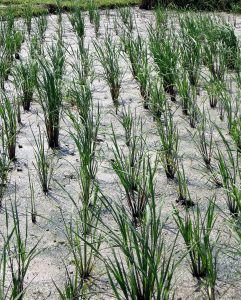What are Genetically Modified Organisms?
Genetically modified organisms (GMOs) are produced by introducing new genetic sequences into the nuclear DNA of animals…or plants using one if several biotechnology processes. The aim of genetic modification is to induce the expression of new traits in the target organism.
(Richard, 2015)
China is one of the leading nations in agricultural biotechnology. The first successful commercialized genetically modified strand was cotton, which yielded higher incomes for small farmers by increasing sown areas by 350% from 1997 to 2000 and decreased the use of pesticides significantly (Huang, Rozelle, Pray, Wang 2002, p. 675). Since this modified cotton does not enter the food chain, there was no interfering law for commercialization and therefore it spread quickly to other countries (Falkner and Gupta, 2009, p. 127).
Recent development of Genetically Modified (GM) crops seems to offer a promising solution: strains of insect-resistant crops, such as rice, have been developed. However, this seemingly promise solution has not yet been applied commercially (Huang, Hu, Rozelle & Pray, 2008, p.243).

Sources:
- Falkner, R., & Gupta, A. (2009). The limits of regulatory convergence: globalization and GMO politics in the south. International Environmental Agreements: Politics, Law and Economics, 9(2), 113-133.
- Huang, J., Rozelle, S., Pray, C., & Wang, Q. (2002). Plant biotechnology in China. Science, 295(5555), 674-676.
- Huang, J., Hu, R., Rozelle, S., & Pray, C. (2008). Genetically Modified Rice, Yields, and Pesticides: Assessing Farm‐Level Productivity Effects in China. Economic Development and Cultural Change, 56(2), 241-263. Retrieved from http://www.jstor.org/stable/10.1086/522898
-
Perennial rice breeding nursery [A population of rice plants with genetic variation for rhizomes and other traits. Rhizome genes were donated by Oryza longistaminata through wide hybridization. These plants were in a rice breeding nursery belonging to the Yunnan Academy of Agricultural Sciences near Sanya, Hainan Province, PRC.]. (2009, September). Retrieved October 30, 2016, from https://commons.wikimedia.org/wiki/File:Perennial_rice_breeding_nursery.JPG
